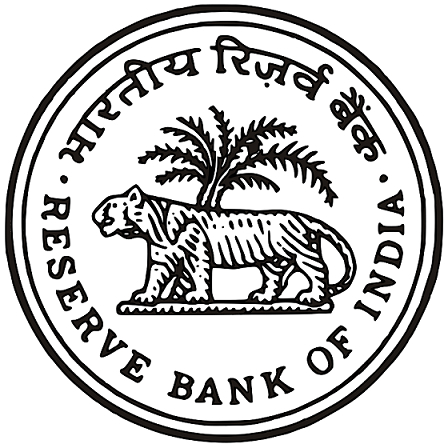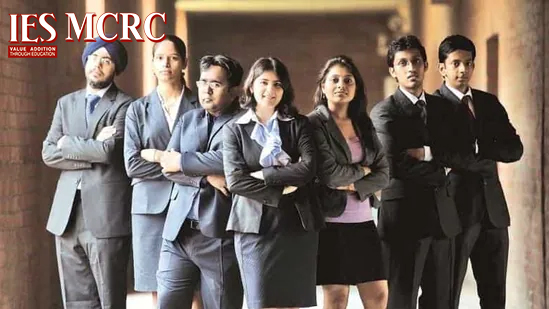 Introduction:
Introduction:
The introduction of three landmark bills in India – the Bharatiya Nyaya Sanhita Bill, 2023 (BNS Bill), the Bharatiya Nagarik Suraksha Sanhita Bill, 2023 (BNSS Bill), and the Bharatiya Sakshya Bill, 2023 (BS Bill) – marks a significant stride toward the modernization of the country’s criminal justice system. These bills, which are poised to replace the age-old Indian Penal Code, 1860, the Criminal Procedure Code, 1973 and the Indian Evidence Act, 1872, respectively, have been brought forth by the Central Government with the predominant goal of expediting justice delivery while aligning the legal framework with contemporary societal needs and expectations. (The Bharatiya Nyaya Sanhita, 2023, n.d.)
The new legislation aims to prioritize justice over punishment, marking a crucial shift from the longstanding colonial-era laws that have shaped India’s criminal justice system for over a century. While some legal experts express concerns that these bills, if passed, might complicate legal proceedings, and raise questions about ongoing trials, supporters of the changes see them as an opportunity to reform laws protecting women and minors and bring more transparency to the criminal justice system. (Lok Sabha, n.d.)
Bharatiya Nyaya Sanhita (BNS) Bill 2023:
The Bharatiya Nyaya Sanhita (BNS) Bill 2023, formerly the Indian Penal Code (IPC) of 1860, signifies a significant legislative development. It introduces crucial amendments, notably in defamation, crimes against women, and laws on attempted suicide. A notable distinction is the reduced scope of the BNS Bill, comprising 356 provisions compared to the IPC’s 511 sections. This streamlined approach aims to establish a more efficient and structured legal framework, focusing on key areas such as cybercrimes, terrorism, hate crimes, honor crimes, and mob lynching. (Jain, 2023).
Revisiting Sedition: In the current Indian Penal Code (IPC), Section 124-A addresses sedition, carrying penalties of life imprisonment or up to three years with a fine. However, the BNS Bill, under provision 150, focuses on actions endangering India’s sovereignty, unity, and integrity. This revised provision emphasizes the gravity of acts against the state and reinforces measures to protect national interests. It will be punishable with imprisonment up to seven years or life imprisonment and a fine.
Defining Terrorism: The BNS Bill introduces a comprehensive terrorism definition for the first time. It defines a terrorist as an individual committing acts within India or abroad to threaten national unity, integrity, security, or to intimidate the public and disrupt public order. This new definition enhances clarity and precision in identifying and addressing terrorism acts.
Combating Mob Lynching: A significant addition to the bill is the introduction of capital punishment for mob lynching offenses. Offenders now face the possibility of capital
punishment or imprisonment for seven years to life. This strict approach underscores the government’s commitment to curbing mob violence and safeguarding citizens’ safety and dignity.
Strengthening Women’s Rights: The BNS Bill recognizes the need to protect women from exploitation through false promises, such as marriage, job offers, or promotions. Such exploitation is now a criminal offense, reflecting a progressive stance on women’s rights and their protection. The proposed legislation introduces penalties for engaging in sexual intercourse with a woman under deceitful circumstances or under the false promise of marriage, with potential sentences of up to 10 years in prison along with fines.
Streamlined Legal Procedures: To expedite the judicial process, the BNS Bill introduces time-bound procedures. A chargesheet must be filed within 90 days, extendable by an additional 90 days with court approval. The investigation period is limited to 180 days, followed by a 30-day window for delivering a judgment after trial. These provisions underscore the importance of swift justice delivery.
The Bharatiya Nyaya Sanhita Bill, 2023, represents a significant step towards reforming India’s legal landscape. By addressing critical issues like sedition, terrorism, mob lynching, women’s rights, and streamlined legal procedures, the bill aims to establish a fair, just, and modern legal framework aligned with India’s evolving societal needs. As the bill advances through the legislative process, it encourages constructive dialogue and engagement to ensure a balanced and effective legal system benefiting all citizens. This legislative transformation reflects India’s commitment to justice and its recognition of the dynamic nature of legal systems in responding to contemporary challenges.
The Bharatiya Nagrik Suraksha Sanhita 2023 (BNSS)
The Bharatiya Nagrik Suraksha Sanhita 2023 (BNSS) is a legislative initiative of great significance aimed at consolidating and amending the legal provisions governing criminal procedures. This legislation places a strong emphasis on expediting the justice process, recognizing the imperative of delivering swift justice in today’s fast-paced world. The core essence of the bill revolves around ensuring timely investigations, trials, and verdicts through the establishment of clear and enforceable timeframes.
Prompt FIR Delivery: The BNSS ensures that complainants receive a First Information Report (FIR) promptly. This provision is a fundamental step in initiating the legal process and ensuring that individuals’ grievances are swiftly acknowledged and addressed.
Victim Information: Victims are kept informed about the progress of their cases through digital means, ensuring transparency and providing them with regular updates on the status of their complaints and trials.
Summary Trial: The bill introduces the concept of a summary trial for minor offenses. This mechanism enables quicker resolution of cases involving minor infractions, reducing the burden on the legal system and ensuring a more efficient allocation of resources.
Zero FIR: Perhaps one of the most groundbreaking provisions, the introduction of a ‘Zero FIR’ empowers individuals to file an FIR at any police station, regardless of jurisdiction. Furthermore, the bill mandates the transfer of this FIR to the appropriate police station within 15 days. This ensures that cases are efficiently handled, regardless of where the crime occurred, and prevents delays caused by jurisdictional issues.
Furthermore, the bill introduces advancements in the realm of electronic proceedings. It allows all legal processes, including trials and inquiries, to be conducted electronically, facilitating greater accessibility and efficiency in the legal system. Additionally, the submission of electronic devices such as mobile phones, computers, or telephones as evidence is permitted when they contain crucial digital information.
Forensic investigation is another crucial area addressed by the BNSS. The bill mandates forensic investigations for crimes carrying a minimum sentence of seven years in prison. Forensic experts are required to visit crime scenes, collect evidence, and document the process using electronic devices like mobile phones.
In conclusion, the Bharatiya Nagrik Suraksha Sanhita 2023 represents a substantial step towards reforming criminal procedures in India. Its focus on citizen-centricity, expedited justice delivery, electronic proceedings, forensic investigations, and clear timelines for legal procedures signifies a commitment to a more efficient, transparent, and responsive legal system.
The Bhartiya Sakshya Bill 2023 (BS)
The Bhartiya Sakshya Bill 2023, formerly known as the Evidence Act of 1872, is a pioneering legislative endeavor in India aimed at revamping the rules governing evidence in the country’s legal proceedings. This bill introduces several transformative changes that are poised to modernize and streamline the entire process of presenting evidence within the Indian legal system (Joshi, 2023).
One of the most notable and forward-thinking provisions of The Bharatiya Sakshya Bill 2023 is its recognition of electronic evidence as a legitimate and credible form of proof. In a world dominated by technological advancements, this legislation acknowledges the evolving nature of information and communication (Online, 2023).
However, the most remarkable feature of the Bhartiya Sakshya Bill of 2023 lies in its establishment of streamlined procedures for collecting, preserving, and presenting evidence. The previous framework often lacked a standardized approach, leading to inconsistencies and inefficiencies in the legal process. This legislation aims to rectify these issues by providing clear guidelines and protocols for evidence collection and preservation, thereby enhancing the integrity of the evidence and contributing to a more seamless and efficient courtroom experience (Know the Three New Criminal Bills n.d.).
Recognition of Electronic Records as Legal Evidence: While the current law recognizes two types of evidence – documents and oral statements, the Bill broadens this to encompass information stored in semiconductor memory or on communication devices like smartphones and laptops. This expansion means that emails, server logs, smartphone data, location data, and voice messages can all be used as legal evidence, irrespective of whether they originate from standalone computers or devices within a network.
Expanding Secondary Evidence: Under the existing law, secondary evidence includes documents that can prove the contents of an original document, such as specific copies or oral accounts. The Bill expands this category to include oral and written admissions, as well as the testimony of individuals skilled in examining documents. Secondary evidence becomes necessary when the original document is in the possession of the person against whom it’s being used or if the original has been destroyed. (Sondhi, n.d.).
In conclusion, the reception of these bills has elicited a mix of opinions. Some view them as progressive measures that safeguard the rights of the accused, while others express concerns about potential challenges for law enforcement. The fate of these bills will likely be determined through further debate and legislative processes. Nevertheless, these proposed changes represent a significant stride in reforming India’s criminal justice system, aligning it with the evolving dynamics of society and digitalization while striving to enhance efficiency and effectiveness.
References:
The Bharatiya Nyaya Sanhita, 2023. (n.d.). PRS Legislative Research. Retrieved September 9, 2023, from https://prsindia.org/billtrack/the-bharatiya-nyaya-sanhita-2023
Union Home Minister and Minister of Cooperation, Shri Amit Shah introduces the Bhartiya Nyaya Sanhita Bill 2023, the Bharatiya Nagarik Suraksha Sanhita Bill, 2023 and the Bharatiya Sakshya Bill, 2023 in the Lok Sabha, today. (n.d.). Pib.gov.in. Retrieved September 8, 2023, from https://pib.gov.in/PressReleaseIframePage.aspx?PRID=1947941
Jain, R. (2023, August 11). Indian govt proposes overhauling colonial-era criminal laws. Reuters. https://www.reuters.com/world/india/indian-govt-proposes-overhauling-colonial-era-criminal-laws-2023-08-11/
Opinion: Analysis: Breaking Down The Proposed Reforms In Indian Criminal Laws. (n.d.). NDTV.com. Retrieved September 8, 2023, from https://www.ndtv.com/opinion/analysis-breaking-down-the-proposed-reforms-in-indian-criminal-laws-4292838
Revamp of criminal laws: Centre brings Bills to replace IPC, CrPC, Evidence Act. (2023, August 11). The Indian Express. https://indianexpress.com/article/india/amit-shah-bills-reforming-indias-criminal-justice-system-8887532/
Joshi, S. W. (2023, August 15). Bharatiya Nyaya Sanhita, 2023: New and repealed provisions, drafting errors and more. Bar and Bench – Indian Legal News. https://www.barandbench.com/news/bharatiya-nyaya-sanhita-2023-changes-and-highlights
Online |, E. T. (2023, August 11). Criminal justice system to be overhauled, says HM Shah; here are key changes proposed in new laws. The Economic Times. https://economictimes.indiatimes.com/news
Know The Three New Criminal Bills: What’s New and What’s Old? (n.d.). The Wire. Retrieved September 8, 2023, from https://thewire.in/government/know-the-three-new-criminal-bills-whats-new-and-whats-old
Sondhi, A. (n.d.). Unravelling the new Bharatiya criminal law Bills. Deccan Herald. Retrieved September 8, 2023, from https://www.deccanherald.com/india/unravelling-the-new-bharatiya-criminal-law-bills-2653712

Authored By:
Dr Mayuri Pandya Dean
Faculty of Law GLS University

Authored By: Prof. Amit Kanchanbaras Professor & HoD- Dept. of Finance Head - Corporate Relations ISBR Business School, Bengaluru



















































 Dr Mayuri Pandya
Dean
Faculty of Law, GLS University
Dr Mayuri Pandya
Dean
Faculty of Law, GLS University
 Dr. Aswathy Madhukumar
Assistant Professor, IIULER, Goa
(Ph.D.- Indian Law Institute, Delhi)
Dr. Aswathy Madhukumar
Assistant Professor, IIULER, Goa
(Ph.D.- Indian Law Institute, Delhi)
 Ms. Nidhi Khare Sinha
Assistant Professor, IIULER, Goa
(Pursuing Ph.D. from NLSIU Bengaluru)
Ms. Nidhi Khare Sinha
Assistant Professor, IIULER, Goa
(Pursuing Ph.D. from NLSIU Bengaluru)













